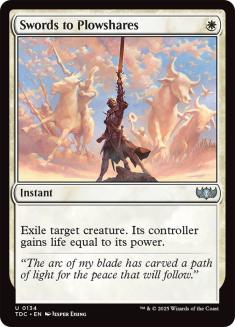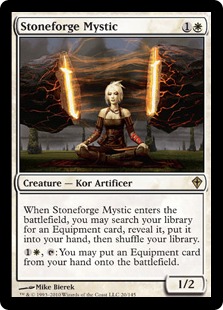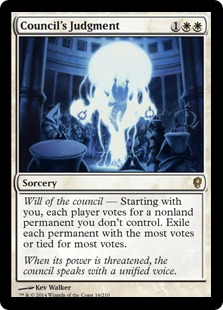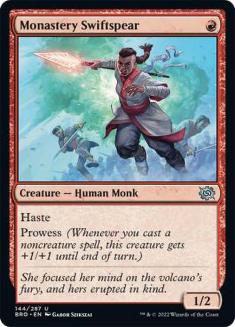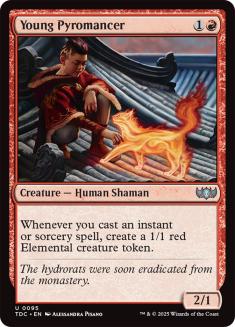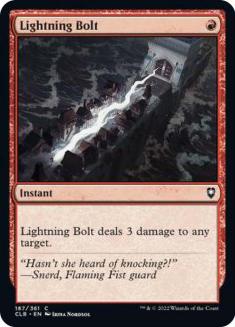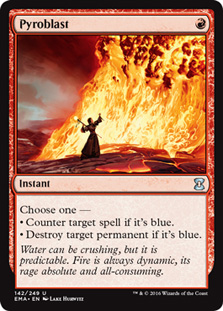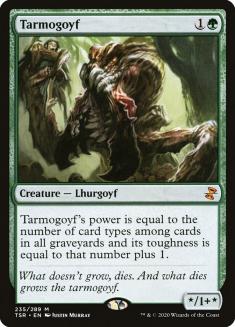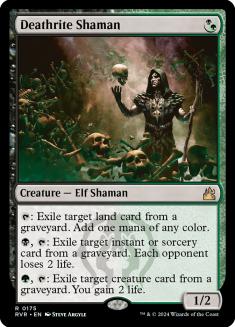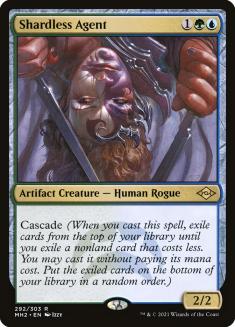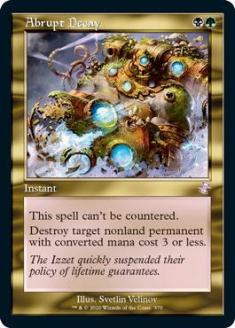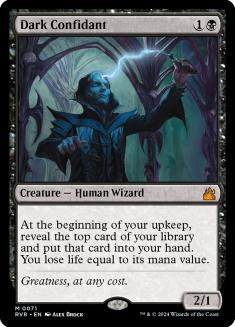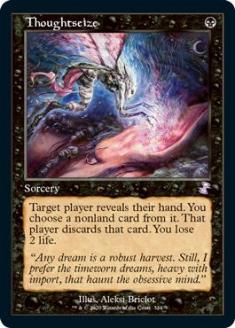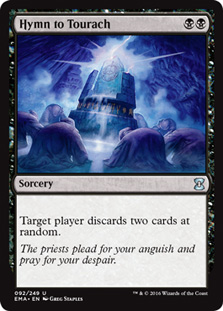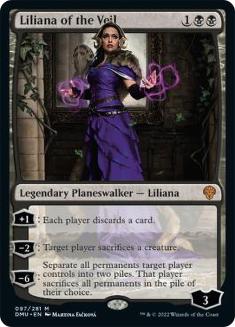Chances are, if you’re interested in Legacy, it’s because you want to cast Brainstorm and Force of Will. That’s understandable, because those cards are
super sweet. Even though there is a stack of blue cards that are very close to auto-includes in any blue Legacy deck, deckbuilding doesn’t feel limited. In
fact, it’s quite the opposite — you can do whatever you want.
Between Stoneblade, Shardless, Miracles, and Delver, you’ve got a lot of options for what archetype of fair blue deck you want to play. What are the pros
and cons of each, and how do they stack up against each other? More importantly, why are they built the way that they are?
To understand that, we need to evaluate what each of the decks do, and how that makes them match up against each other. How the games play out and what
matters changes game to game and matters depending on how each player’s deck is built.
The General Theory Behind Playing Blue Decks in Legacy
Most of the blue decks in Legacy splash one or more colors and use an important creature from their splash color as a win condition. The highly interactive
nature of these decks makes them feel like midrange decks, although that is certainly more true for some decks than others.
They typically interact with counterspells and removal, although splash colors can add a different form of interaction, such as black for discard or red
for burn that help close games. Mana denial with Wasteland (often in combination with Daze) used to be relatively common, but that has fallen out of favor
since the printing of Treasure Cruise, as those cards are neither good with or against Treasure Cruise.
Sometimes they get to interact just by playing creatures. Tarmogoyf backed up by counterspells is a quick clock that doesn’t allow your opponent to set up
much of anything. Also, a Tarmogoyf on defensive can hold off an army of Wild Nacatls, making it difficult for other creature decks to exist unless they go
over the top of the blue decks.
Brainstorm is one of the key pieces to making the blue decks work. First of all, playing cantrips allows you to play less lands than everyone else because
you’ll see more cards per game. That leads to drawing into more spells in the lategame, although certain decks end up feeling threat-light because of all
the “air” in their decks.
What Brainstorm actually does is help fix that “air” problem, by potentially turning dead soft counters (like Spell Pierce and Daze) and excess lands into
“real” spells. While some hands might want you to burn a Brainstorm early, it’s typically better to hold onto the card for as long as possible in order to
extract maximum value from it.
With these blue decks, an emphasis is placed on ending the game in a timely manner. You cannot try to milk value from your cards and expect that to carry
you to victory. Eventually you will die to a True-Name Nemesis, a flurry of Lightning Bolts, or a trio of Deathrite Shamans and wonder what went wrong.
Most of the time, being proactive is the best strategy.
Still, there are some decks like Miracles that exist and also do well, despite mostly playing for the long game. However, they also have access to the
Sensei’s Divining Top + Counterbalance soft lock, which can help prevent a lot of the above scenarios from occurring.
These decks are “fair.” In fact, they are some of the fairest decks in Legacy. In order to survive without access to the panic button called Force of Will
or the great card filtering of Brainstorm, your deck probably has to be doing some powerful things. Even though the blue decks aren’t the most powerful,
they’re the most consistent. They have defense against Turn 1 combos and have Brainstorm to fix poor draws, while the non-blue decks have to rely on power
for their game wins.
That consistency is why most of the “good” players gravitate toward midrange blue decks in Legacy. Most of the games play out the same way, you’re not
punished too much for poor draws because Brainstorm tends to fix even the worst hands, and you have a solid defense against the crazy stuff that people are
trying to do to you in Legacy.
Blue can’t do it on its own though, so what splash do we choose? What do each of the colors offer us?
White
This is the more controlling color. Swords to Plowshares is a removal spell you typically don’t want in your aggressive deck, and Stoneforge Mystic, while
it can give you free wins, is mostly about setting up an unbeatable lategame with Batterskull and/or Umezawa’s Jitte.
Creatures (10)
Lands (18)
Spells (32)
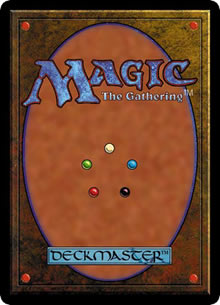
Advantages
Your cards are more powerful on average — Swords to Plowshares kills anything, no questions asked, and Stoneforge Mystic, even if it dies, gives you a
huge threat or an extra resource to shuffle away with Brainstorm.
In the matchups where you’d want cards like Swords to Plowshares and Batterskull, white is clearly the best color.
Disadvantages
White probably gives blue decks the best cards in a vacuum, but they generally don’t help you against the fringe matchups in Legacy, such as the majority
of combo decks. Against decks like Storm and Sneak and Show, the white cards are the ones you’re likely to sideboard out. Cards like Pyroblast and
Thoughtseize don’t have similar cards in white. Instead, you’re stuck trying to turtle up behind a wall of counterspells, although you can go down the
Counterbalance route also.
The other disadvantage to playing white is that you kind of pigeon-hole yourself into being the control deck. That plan becomes awkward when you’re up
against a Sultai deck because they have answers to True-Name Nemesis, lots of card advantage, and Abrupt Decay for everything else. Sometimes you can beat
them with a quick Batterskull, but most of the time the games will go long and they’ll grind you out.
Treasure Cruise is probably the saving grace here. While previously Sultai had the advantage in raw card drawing thanks to Ancestral Vision, now the decks
are on mostly equal footing.
Things To Keep In Mind
Make sure you have a sideboard that has plenty of cards that are generally good in a lot of matchups. White’s cards are so narrow that you’ll want to be
sideboarding a lot in nearly every matchup. For example, against decks like Burn and Storm, you’re going to need plenty of ways to interact with them
because your Swords to Plowshares and slow cards like Council’s Judgment aren’t always going to be getting it done.
You don’t have discard as a way to interact with their hand, so you need to be able to interact with the stack. Flusterstorm is great for this because it’s
the cheapest option. Meddling Mage is another solid option, just because of how applicable it is in a wide variety of matchups. It’s not great against
anything, but you can board it in against a lot of matchups and it’s always solid.
Conclusion
I don’t like white, but it’s the color that most of the “grinders” gravitate towards and frequently do well with. Due to their success, it’s hard to say
that it’s “bad” or even worse than the other options, but to each their own.
Planeswalkers (3)
Lands (23)
Spells (34)

Advantages
Counterbalance + Top is a hard lock against many decks. Against everything else, it’s a soft lock, but that’s generally good enough to give you a large
amount of breathing room.
Despite the fact that Miracles thrives in the lategame doesn’t mean you don’t have any free wins. A quick Counterbalance + Top lock can be game over
against a lot of different decks. In that sense, this is not your average control deck.
Disadvantages
Playing strictly for the lategame opens the door to any sort of bad thing happening to you. You might not have all the answers at the right time.
Especially now, with Delver decks having access to Treasure Cruise, you run the risk of them outdrawing you.
This deck doesn’t mess around with extraneous win conditions. It’s compact and nearly every card in the deck is focusing on staying alive. In that sense,
you won’t draw a Daze on Turn 8 that’s dead, but you might draw redundant Counterbalances or a Counterbalance without a Sensei’s Divining Top. It could
also have Terminus or Entreat the Angels in its opening hand, so in that sense, it’s not like you don’t have the risks that the other decks do.
Because of how poorly your draws can be sometimes, it can be difficult for Miracles to reliably take total control on the game.
Things to Keep in Mind
Nearly everyone considers Miracles to be the “true” control deck of the format, and while that’s currently true, I don’t feel like that’s necessarily the
best way to build a Counterbalance deck. I’ve had more success with using Counterbalance to protect a threat than I ever did playing Miracles. That said,
clearly there are a lot of Miracles experts out there (Schonegger, Duke, Lossett, Roukas, Braverman, just to name a few), and they don’t feel like their
control plan is flimsy at all.
Conclusion
Many of the cards in Miracles have diminishing returns, and they often rely on resolving a Brainstorm to turn their hand from medium to great. If that’s
not a deal breaker for you, then Miracles is a great deck. The only other issue is that the deck is rather slow, and getting used to the physical mechanics
of the deck may take time. Sensei’s Divining Top is a tricky card, and one that you need to use quickly unless you want to pick up a bunch of unintentional
draws.
Creatures (15)
Lands (23)
Spells (22)

Advantages
Since this deck is four colors, it can be tailor made to suit whatever purpose you need. Deathrite Shaman gives you explosive starts and Stoneforge Mystic
gives you a great lategame.
Disadvantages
Well, this deck is a solid three colors with a splash of a fourth, so that will naturally cause some issues against people who are actually messing with
your manabase.
Ideally, this deck wants to be the aggro deck in most of its matchups, but since it’s built with a bunch of controlling cards, it can feel schizophrenic at
times.
Things to Keep in Mind
It’s important to note that while Deathblade shares a lot of similarities between the various Stoneblade decks and Shardless Sultai, it’s actually an aggro
deck*. Of course, it’s not on the furthest end of that spectrum, as decks with Delver of Secrets tend to be a bit more aggressive, but it’s important to
note that distinction when considering how to build and play the deck.
For example, sideboard plans that involve bringing in things like Supreme Verdict against decks like Shardless Sultai, which are more toward the control
side of things, is a bad idea. Shardless Sultai will win in the lategame, so boarding in a defensive card doesn’t make a lot of sense. Knowing your role is
important in these blue mirrors, and it’s something that might not be immediately obvious.
This deck has Deathrite Shaman and it needs to leverage those in order to be successful. The Stoneblade decks are more than fine killing your first few
threats before deploying a True-Name Nemesis because they can afford to win at a leisurely pace, whereas Deathblade has no such luxury. They’d much rather
prefer to curve True-Name Nemesis into removal spells to win the race because that capitalizes on what Deathrite Shaman does best.
Conclusion
I haven’t liked this deck. With Stoneforge Mystic as its threat and sideboard cards like Supreme Verdict, it often feels like it doesn’t understand its
identity. Overall, I think this is just a misunderstanding of where this deck stands on the aggro / control spectrum, which means you need to build your
sideboard with those things in mind.
Red
Red lends itself to being more aggressive, mostly thanks to Lightning Bolt being its best removal spell. It’s tough to play a splash red deck and not be
aggressive, although there are some decks that splash red only for Pyroblast and Red Elemental Blast.
Creatures (12)
Lands (16)
Spells (32)

Advantages
U/R Delver is basically the only deck that kills on Turn 3 somewhat consistently. Sure, any deck with Delver of Secrets and Lightning Bolts can kill on
Turn 3 if you have a perfect draw, but any draw including a pair of Monastery Swiftspears can get there. Personally, I’ve had two Turn-3 kills in 25 real
life tournament matches.
Overall, that’s not the key selling point to playing the deck, but anytime your deck comes with some free wins, that makes the deck at least a little bit
better. While you might not kill on Turn 3 consistently, the aggressive nature means that any time your opponent stumbles, you will be able to punish them
for that.
Disadvantages
Some might stay that U/R Delver doesn’t have the staying power of the other blue decks, but that’s not necessarily true. Given a good draw, U/R Delver can
actually outdraw its opponents thanks to Treasure Cruise and halt their opponent’s attempts to do the same thanks to Pyroblast.
In reality, the only true downside is the linearity and overall low power level. A Monastery Swiftspear on Turn 1 or 2 is great, but a topdecked Monastery
Swiftspear on Turn 8? I’m not impressed.
As far as being linear is concerned, it’s both a positive and a negative. While it doesn’t have the mana denial aspect of Temur Delver that allows it to
steal wins from even the worst matchups, it also doesn’t have those games where you have cards that don’t help with your gameplan.
The deck tries to do one thing and it happens to do that one thing really well. It just means that when you’re up against something like Lands, you don’t
have useful tools to disrupt them, nor can you effectively answer a permanent that isn’t Lightning Bolt-able.
Things to Keep in Mind
I’ve played a lot of U/R Delver, and I’m still trying to learn how to play various matchups. For example, I don’t think I’m favored against Temur Delver,
but I’m still not quite sure if that means I need to be hell-bent on protecting my threats with Force of Will in order to try and win quickly.
After trying various strategies, I don’t think you should counter removal unless it’s aimed at a key Young Pyromancer. Instead, you should save your
counterspells for the inevitable fight over an opposing Tarmogoyf or your own Treasure Cruise. Even though Tarmogoyf is difficult to attack through or
block, sometimes Tarmogoyf isn’t the fight that matters. It might be tough to win once Tarmogoyf is in play, but it’s doable, especially once you resolve a
Treasure Cruise.
The things that matter might vary, not only game to game, but also turn to turn. Being able to read those gamestates is important, especially considering
how light U/R Delver is on counterspells. You can’t just afford to use them on any old thing.
Conclusion
I like this deck a lot, but it is very much the baseline strategy. If someone wants to beat you, they probably can. Since you have Force of Will and
Treasure Cruise, you’re probably going to put up a fight, but at the end of the day I feel like we can do better.
Green
Green isn’t really anything special. Deathrite Shaman is a great card, but ultimately it’s something you can do without. Tarmogoyf is something I like more
than Stoneforge Mystic, but is it better than Young Pyromancer? Even with Young Pyromancer dying to every removal spell ever, it’s difficult to say.
Creatures (12)
Lands (18)
Spells (30)
- 4 Brainstorm
- 4 Lightning Bolt
- 4 Force of Will
- 4 Daze
- 4 Stifle
- 4 Ponder
- 2 Spell Pierce
- 2 Forked Bolt
- 2 Gitaxian Probe
Sideboard

Advantages
If you think U/R Delver can take advantage of a stumbling opponent, you have never played against Temur Delver. Stifle, Wasteland, and Daze all help put
your opponent into a bad spot. If they’re already in a bad spot, those cards make sure they stay there.
Disadvantages
If you lose the die roll, your entire plan of mana denial might not work. Being on the play helps Stifle’s cause a lot, although they are still put into
the awful position of “Do I fetch main phase to play around Stifle only to walk into Wasteland, or do I play around Wasteland by keeping my fetch up only
to walk into Stifle?”
Clearly being able to fetch basics is going to be huge against Temur Delver, but not all decks have that luxury. Sometimes your draw lines up where you
have two dual lands and a fetchland, so even if you fetch a basic, you’ll be more mana screwed after two Wastelands than you would have been had you simply
fetched an extra dual.
It’s things like that that allow Temur Delver players to prey on people who haven’t tested the matchup extensively. However, once someone is used to
playing around the Stifle / Wasteland combination, things get a lot trickier. Temur Delver is a beatdown deck that is trying to continually apply pressure
to its opponent without a draw engine, so when it ends up with a bunch of useless Stifles in hand, it can be tough to close a game out.
Overall, the deck is solid and consistent, but the card quality varies wildly from game to game. Sometimes Stifle is great and you wouldn’t rather have
anything else. Other games it has a blank text box.
Things to Keep in Mind
Playing Nimble Mongoose and Tarmogoyf is not the only reason this deck hasn’t incorporated Treasure Cruise. Temur Delver should be focused on capitalizing
on the mana denial aspect, which means having a tight focus on maintaining board control. You might not like Stifle because of how inconsistent it is, but
your win rate will be much lower if you cut it. Similarly, you might not like the card disadvantage of Force of Will, but you should be siding it out at a
less frequent rate than you would with other blue decks.
Conclusion
If you don’t like Stifle and/or you don’t like having Force of Will in your deck post-board in the blue mirrors, you should not be playing Temur Delver.
Black
Black provides a sick disruption curve of Thoughtseize, Hymn to Tourach, Liliana of the Veil. If you want, there’s also Deathrite Shaman to accelerate you
and give you a clock that doesn’t require the combat step, and Abrupt Decay to handle permanents such as Counterbalance that you wouldn’t otherwise be able
to remove in game 1.
Since Treasure Cruise was printed, it’s been harder to keep people with discard since they’re just a spell away from having a fresh hand. Despite that, we
occasionally see black decks do well.
Creatures (14)
Planeswalkers (3)
Lands (22)
Spells (21)

Advantages
You will likely have more card advantage than any other opponent you face. Deathrite Shaman does a ton of unique things for you, Abrupt Decay provides all
the answers, and the combination of discard plus counterspells is very potent against combo decks.
Disadvantages
Shardless Sultai plays out like a true Rock deck. In theory, you have answers for everything, but that doesn’t mean you’ll draw them in the correct order.
Also, now that everyone has access to Treasure Cruise, your draw engine isn’t as impressive as it used to be. In order to match our opponents in the card
advantage department, we have to play some of our own delve cards, but those don’t play nicely with our own Deathrite Shamans and Treasure Cruises.
The manabase, while typically great, suffers from a Price of Progress problem. U/R Delver, an otherwise fine matchup, tends to be quite bad if they have
2-3 copies in their 75.
Things to Keep in Mind
You are often the control deck, but it won’t last forever. Shardless Sultai is able to carefully craft gamestates where you’re ahead, but you need them to
draw blanks for a turn or three in order to actually cement your position. They might just draw something you can’t deal with.
Knowing when to turn that corner is the difference between winning and losing. There have been countless games where I could have continued durdling
around, drawing cards, maybe making them discard some stuff, but what’s really important is deploying two creatures and actually getting your beatdowns on.
Conclusion
I like this deck a lot, but I’m also biased.
Notes on Deckbuilding
Synergy is key here, even if it’s not as apparent as Heritage Druid plus Nettle Sentinel. For the most part, you just need to make sure your gameplans are
not wildly divergent. For example, if you are trying to Stifle + Wasteland people, you probably don’t want to be making them discard things. Mana denial is
effective because it prevents your opponent from casting their spells.
In that situation, discard does not make you more likely to win the game — you’re probably taking a card they wouldn’t have been able to cast anyway.
This is where I think most people make mistakes in deckbuilding. They try to do too much. “Well, Stifle + Wasteland is great and Thoughtseize is great, so
I’ll just play them all!” In reality, your deck no longer has a coherent gameplan. If you want to mana screw people, then do that. If you want to make
people discard their best spells, then do that. Don’t mix them.
I used to play Sultai with four Wasteland, four Daze, and a lot of discard, and that was fine. Mana screwing them wasn’t my primary goal, but Wasteland
kept their mana count low and made my Dazes live for most of the game. Sometimes I would Hymn to Tourach their hand away, and my Wastelands meant they
wouldn’t be able to cast the Jace, the Mind Sculptor they’d topdeck a turn or two later, which meant I had a window to resolve another discard spell.
Wasteland was just a good card and the manabases could afford to play it. The same can’t be said for a deck like Shardless Sultai, which has a relatively
high mana curve and lots of colored mana symbols. In that deck, I like using two Wastelands because it’s how many I think I can play without hindering my
manabase, and I generally only use them to kill utility lands.
How to Break It
The easiest way to gain an edge in the blue mirrors is by coming at them from an angle they’re not ready for. At this point, cards like Delver of Secrets,
Young Pyromancer, and Stoneforge Mystic are cards that people are ready for. Even things like Ancestral Vision, which used to be trumps, now no longer
matter as much because everyone has Treasure Cruise.
You have to be careful though. If you try to get cute and do something like combine Stifle and Phyrexian Dreadnought, you might slam head-first into splash
damage from stuff like Ancient Grudge that were meant for Stoneforge Mystic. You might also end up with a deck that is great against blue decks, such as
Lands, but is weak against a larger portion of the rest of the field. At the end of the day, there are far more decks in Legacy than just blue decks, and
you don’t want to over-metagame because the metagame is wide open.
So what do we do? Two cards that come to mind are Entomb and Punishing Fire.
Creatures (9)
Lands (17)
Spells (34)

This is a deck that I recently used to go undefeated at a local Legacy tournament. It could use some fine tuning, but I got to do everything I set out to
do.
–Entomb a Bloodghast to get a clock going and Flashback any Cabal Therapies.
–Entomb for Faithless Looting so I had a discard outlet for a fatty in my hand.
–Entomb for Dread Return when I had a fatty in the graveyard and Young Pyromancer going.
-Cast Innocent Blood with Young Pyromancer in play.
–Reanimate their Stoneforge Mystic I Cabal Therapy-ed, searching for my sideboarded Umezawa’s Jitte.
–Entomb for Ancient Grudge to kill their Batterskull.
Overall, it was a delight. It was made even better by the fact that my opponents found it difficult to sideboard against my deck that used the graveyard
but also had Young Pyromancer. It felt like attacking from multiple angles was a solid way to break the pseudo-mirrors.
Most of the credit goes to Todd Anderson and Drew Levin for working on the archetype previously.
Creatures (9)
Lands (18)
Spells (33)

I almost played this deck at the Season Four Invitational. I’ve since tweaked the deck, and I think it’s a real contender. This deck is quite similar to
U/R Delver, although instead of using small creatures as threats, this deck focuses on finding and resolving Treasure Cruise. The theory is that you don’t
need to actually kill people, you just need to outdraw them. If you’re going long, Punishing Fire is another powerful engine to have access to.
Conclusion
If you like to be aggressive, Delver of Secrets is where you want to be. U/R Delver is the embodiment of pure aggression, whereas decks like Temur Delver
are more careful and calculated. With the mana denial aspect, it’s far more reactive than U/R Delver would ever want to be.
For the control players out there, you’ll want to look at Azorius. Both Miracles and Stoneblade give you a lot of options, both in deckbuilding and
gameplay. Overall, I would say these are the more “solid” blue decks you can play in Legacy, but you will have a difficult time beating the top 1% of
players.
Sultai is the deck for people who like a little excitement in their life. Discard is great, but it often leads to cries of “He topdecked X the turn before
I was going to win!” You can’t stop the top of the deck. For the most part, discard will allow you to craft a gameplan and “get it in good”, but that
doesn’t mean you’ll always win. Similarly, your cards are often so polarizing — either they’re great in the matchup or they aren’t.
Discard and removal also have diminishing returns. Later in the game, you will inevitably draw a Thoughtseize when your opponent has no hand. Meanwhile,
their cards are all live, because they don’t rely on things like opponents having cards in hand in order to do something.
Cards like Abrupt Decay might make you feel like you have answers for most of the problematic cards out there, but it can be a wild ride. At times, Sultai
will feel like the “safe” choice, while other times it will feel like nothing is in your control. If you are able to get past that, Sultai is a fantastic
choice as long as you’re prepared to beat the Delver decks.
Overall, I can’t fault anyone for choosing to play any of the decks I talked about. Each of them have their own pros and cons, and ultimately, you will do
better with the style of deck you are more comfortable with. The Legacy metagame shifts, but only slowly, so you’ll typically be able to play the same deck
for months on end.
No matter what type of blue deck you choose, you should be able to be successful as long as you understand what your deck is trying to do.
*For reference, the aggro to control scale for blue decks:
Aggro ————————————————————————————————–> Control
U/R Delver –> Temur Delver –> Deathblade –> Stoneblade –> Shardless Sultai –> Miracles

